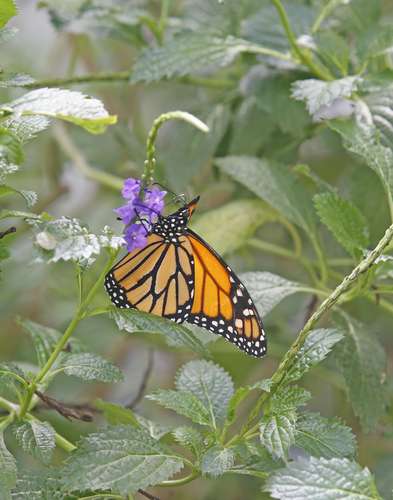The suitable habitat for the oyamel (religious abies), the only tree that meets the necessary conditions for the monarch butterfly to shelter and survive during its winter stay in Mexico, will disappear from the Monarch Butterfly Biosphere Reserve (RBMM) in 2090 as a result of global warming.
This was pointed out by Cuauhtémoc Sáenz-Romero, professor at the Universidad Michoacana de San Nicolás de Hidalgo in Mexico and lead author of the article “Establishment of hibernation sites for the monarch butterfly in future climates: expansion of the upper altitudinal limit of religious abies through assisted migration”, published in Frontiers in Forests and Global Change (acortar.link/aicRoX).
Interviewed by The Day After the monarch butterfly was included a few days ago in the Endangered Species Act of the United States, the scientist spoke out for more proactive forest management, which considers adaptation to climate change and not just palliative measures for the human disturbances of ecosystems.
In these bleak future scenarios, forest management must adapt. Conservation measures within the reserve are insufficient. It is urgently necessary to look for complementary alternatives outside of this site. We propose assisted migration of the species
.
Since 2021, the research team led by Sáenz-Romero has sought to demonstrate the viability of planting new fir forests in the Nevado de Toluca, which will eventually become future hibernation sites.
In fact, in recent years, monarch butterflies have established large new colonies in the Nevado de Toluca, suggesting that they are already looking for new places to spend the winter, since their historic sites within the Mariposa Biosphere Reserve Monarch are now too warm.
In conversation with this newspaper, the scientist explained that as part of this work, seven years ago they collected seeds in the RBMM; Then, they grew seedlings from them, first for three years in a nursery; and in 2021, they transplanted them to four sites on the northeast slope of Nevado de Toluca.
We chose this mountain because a 2012 climate projection told us that in a few years, this place will have the right climate for the so-called high fir trees. In addition, the site is home to the community of Calimaya, where the inhabitants are very organized, have excellent forest management and provide us with security.
At the site, 960 seedlings of this coniferous tree were planted at four altitudes (3,400, 3,600, 3,800 and 4,000 meters). The specimens were planted under nurse plants
(Senecio cinerarioides, Mountain wolf y Pinus hartwegii) to protect them from cold and excessive sunlight. Between 2021 and 2023, Sáenz-Romero’s team, with the support of undergraduate and graduate students and local foresters, monitored its growth, height and diameter every two months, prioritizing survival as a key indicator for conservation.
“We call this ‘assisted migration’: growing seedlings from seeds collected from fir populations in warmer sites than the reforestation site, but which by 2060 is expected to be similar to current hibernation sites due to global warming. ”, he commented.
The results obtained so far reflect the survival of 68 percent of the plantations made at 3,800 meters, well above the upper limit of natural distribution (which is between 2,800 and 3,500 meters), which is considered an encouraging result
.
The research, which was designed to offset the warming expected by 2060, when a warming of 2.3 degrees is projected in the Monarch Butterfly Biosphere Reserve and Nevado de Toluca, is concluded very justified establishing fir trees at high altitude to provide potential overwintering sites to host monarch butterflies in a future climate change scenario
.
Sáenz-Romero is clear that The creation of new areas for monarch butterflies is not exclusive to efforts to conserve their current habitat in the Monarch Butterfly Biosphere Reserve; Both approaches must be complementary, with equal priority
.
